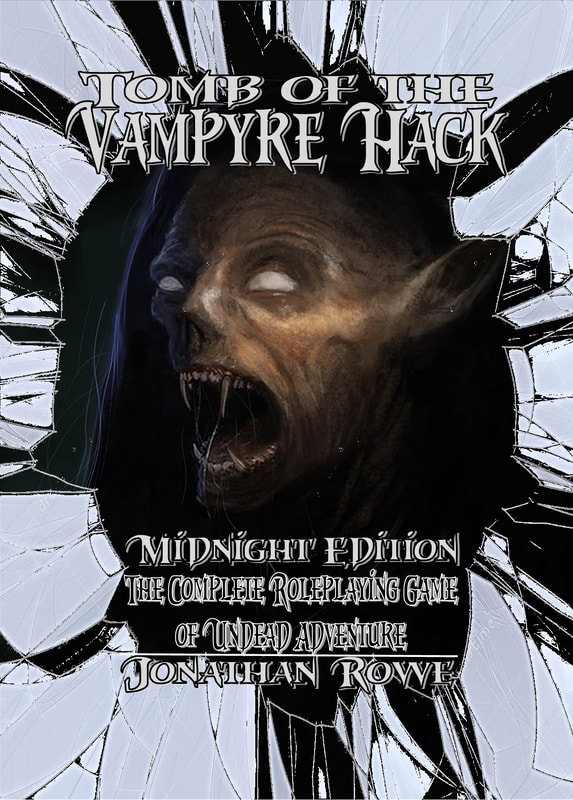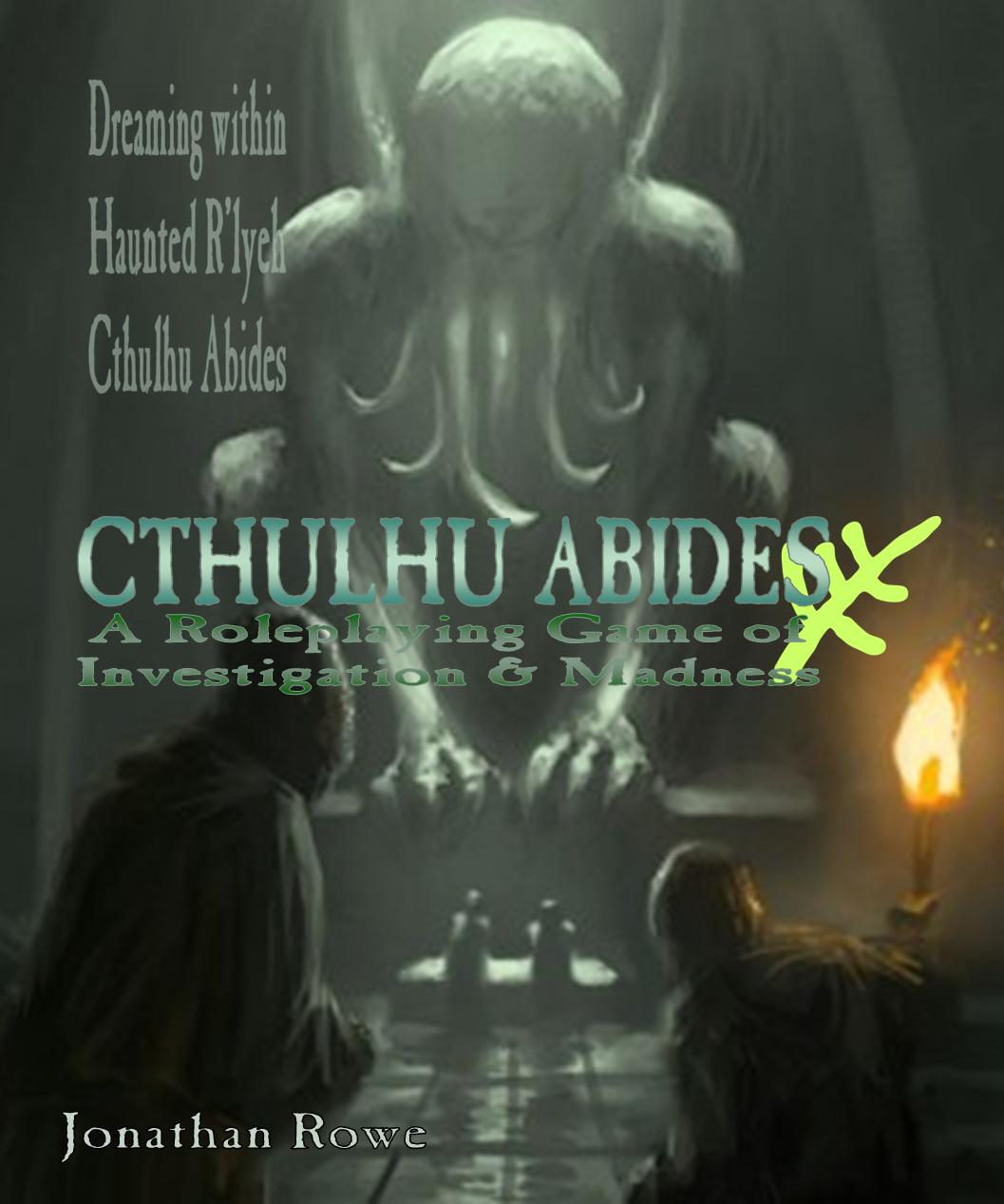|
My indie RPG The Hedgerow Hack has been a modest success - more than modest, really, since it has been picked up by Osprey Games and I've just submitted the MS for a much more innovative and expansive game based on The Hedgerow Hack's quirky legendarium. More news on that in due course! For now, here is a scenario for the original Hedgerow Hack, with a Christmas flavour, pitting mystical Briar Knights against two very unpleasant versions of Santa Claus. There's a lovely physical edition of The Hedgerow Hack but drivethrurpg has a perfectly decent PDF for next to no money at all. If you prefer, you can try this scenario with any Black Hack related system and it lends itself well to OSR retroclones like Labyrinth Lord or Blueholme - or my own The Magus Hack. During the Age of Plagues (1640s and 1650s), strict laws were passed against holding or attending a Christmas church service. Shops and markets were told to stay open on 25 December and soldiers patrolled the streets, seizing any food being prepared for Christmas celebrations. In January 1645, Parliament made clear that Christmas was not to be celebrated but spent in respectful contemplation. This Christmas scenario features the conflict between two Old Gods: King Christmas and his monstrous older brother Lord Yule. When the Puritans ban Christmas during the Age of Plagues, this interrupts a yearly celebration at a Legendary Location that used to empower King Christmas, leading to his defeat by Lord Yule. Enraged, King Christmas enters the Mortal Ages to punish humans, but finds himself bereft of his power and strength. He is arrested by agents of the Witch Harrow and taken to a witches’ prison for breaking the ban on Christmas activities. Lord Yule also enters the Mortal Ages, growing stronger on the mayhem he and his Winter Goblins create. Key NPCsKing Christmas is a majestic giant over 8 feet tall, with the head and claws of a lion and a silver mane. He wears a long robe of deep green and a hood lined with ermine. He embodies medieval monarchy: proud, bombastic and haughty – although events in this story will change his character. He draws power from the gifts left for him at sacred sites like Hollin Howe (Act II) or left on hearths overnight. He is unaffected by Cold Iron but completely disempowered by the Dolour.
Lord Yule serves the Dark, so if the Malignity Die ever exhausts, he appears to assault the PCs. Lord Yule and his Winter Goblins cannot enter a home or camp where the occupants have exchanged gifts within the last 25 hours. The ‘gift’ doesn’t have to be physical, but it must be something significant either to the giver or the receiver. Charlie is a 12-year-old boy from 19th century London, brought back through time by Peterkin, a Gypcean boy with a magical talent for traveling the Hedge. Charlie’s parents are in debtors prison, so he lives at a lodging house run by a friend of his family and works to pay rent. He carries his dearest possession: a letter from his parents expressing a confident faith they will be released and will spend Christmas together. Charlie is a brave and curious boy but at the start of the adventure he has been abducted by Dixon’s Deserters (Act II). Charlie will not be killed during this adventure: he has 4hp but if he is reduced to 0 he is simply captured or runs away and becomes lost. Prelude: Through The HedgeAs usual the Briar Knights are summoned by the Light and sent through the Hedge. This is like walking a narrow hedge maze with wintry branches hemming the Briar Knights in on both sides. At clearings in the maze, there are mysterious visions that set out their mission.
Act I: The Realm of WinterfaeNo map is provided of Winterfae or Christmas Castle. This is a magical landscape and the Briar Knights will find themselves where they need to be, regardless of what direction they take. The Briar Knights arrive in the Age of Fable in a realm called Winterfae. It’s a snowy wonderland of pines, majestic frozen waterfalls, gleaming icicles and sudden blizzards. Over the treetops can be seen Christmas Castle, but once the PCs arrive there they will find the castle in ruins, with signs of a violent siege that ended with the collapse of its gate. The Malignity Rating is 2 (d10). Winter Goblins Lord Yule’s Winter Goblins roam the surrounding woods and the corridors of Christmas Castle. These vicious creatures were part of Lord Yule’s invading army and attack on sight.
The Elfin Workshops King Christmas’ Craft Elfs toiled in his workshops, turning gifts from his mortal devotees into weapons for his war against Lord Yule. The workshops now stand empty, but PCs might discover 1d4 partially-made magical Treasures. Some Craft Elfs remain in hiding in the workshops; they are less vicious than the Winter Goblins but still inclined to treat Briar Knights as invading enemies. 1d4+1 Craft Elfs: HD 1, 4hp, d4(2)dmg, AP1: create traps Craft Elfs create traps out of any junk to hand and at the start of an encounter every opponent must test WIS or DEX to avoid a trap:
If defeated, Craft Elfs turn into mannequins of holly and mistletoe. If captured or parlayed with, they can reveal the same information as the Winter Goblins, but also that they have no love for their King, who enslaved them in ages past. King Christmas lost his power recently when mortals stopped offering gifts to him, which allowed Lord Yule to gain the upper hand. The King went to exact revenge on the mortals who betrayed him and many Craft Elfs fled with him. One Elf named Rimenose remains perversely loyal to King Christmas (“he was a cruel master, but he was fair!”) and will accompany the Briar Knights if they offer to find the King. He could fashion on partially-made Treasure into a working one (roll randomly) that can be brought to any Age where King Christmas is present. The Midwinter Throne King Christmas’ throne room has been looted by Goblins but the ice throne remains untouched. Any Fae character sitting on it will see a vision of the mortal boy Charlie in the company of dangerous looking soldiers (Act II, Dixon’s Deserters), of Lord Yule dancing on the rooftops of a town and King Christmas imprisoned in a dungeon (Act III). The Solstice Tower The highest turret contains a portal to the Mortal Ages: a tapestry depicting a winter glade of holly trees. If examined closely, snow falls and shadows lengthen in the scene and characters stepping into it appear as woven images in the clearing. The portal is defended by 1d4+1 Winter Goblins awaiting Lord Yule’s return but if the PCs have befriended Rimenose he could negotiate safe passage. Act II: The Age of PlaguesIt is the year 1645. Christmas has been banned across the Old Shires. Midwinter approaches and no carols are sung and no gifts left out on the hearth for the pagan spirits of the season. Briar Knights arrive at a Legendary Location: Hollin Howe (MW). This is the bare summit of a hill, ringed by holly trees. The Portal to Winterfae appears as a column of swirling snowflakes, even on a clear day. A path leads to Yeavering Farm; footprints in the snow show traffic coming from Aster’s Camp. Monstrous hoof-prints in the snow head off in the direction of The Copper Kettle Inn. Travelling through the woods risks encounters with more Winter Goblins or Fugitive Elfs; encountering Dixon’s Deserters is a mandatory encounter. The Malignity Rating in the woods is 1 (d12) going up to 3 (d10) by night. If Rimenose accompanies the Briar Knights, he will cloak himself in a Glamour that makes him seem like an ugly human urchin - but this is dispelled by Cold Iron or the Witch-Harrow's Dolorous Word. I'll get round to creating a map for the woods and the locations around Hollin Howe, but they are few enough that I think most GMs can 'wing it.' Similarly, floorplans for Yeavering Farm or the Copper Kettle Inn can be created on the fly. Winter Goblins These creatures are gathering human captives for Lord Yule to feast on. This band of 2d4 Winter Goblins keeps Henry Yeavering and his son John in chains. If freed, they will take their rescuers to Yeavering Farm to be reunited with their family. Fugitive Elfs This group of 2d4 Elfs have gone rather mad with their sudden freedom and enjoy playing vicious pranks on mortals. They have a magical ability to craft almost anything from pine cones, icicles and snow and use this to lay elaborate traps (ice cages, exploding pine cones, avalanches, skewering icicles). If Briar Knights survive their traps, the Elfs flee, but if the PCs brought Rimenose with them they might be able to parlay. The Elfs believe that King Christmas has been captured and that Lord Yule has gone mad with rage and perhaps grief. Dixon's Deserters (mandatory encounter)
The Deserters are crafty enough to ambush PCs and demand they surrender, robbing them of weapons and food. Fighting the Deserters is a dangerous undertaking, but events take a course that might spare cautious PCs from doing this. On the night they make camp it is Lt Chester’s turn to give a gift, but he refuses, dismissing Christmas gift-giving as a silly old superstition. He and Dixon nearly come to blows but are interrupted when the camp is attacked by Winter Goblins. In the melee, the Deserters are wiped out and Charlie escapes into the snowstorm. At the GM’s discretion, Dixon himself survives; moved by guilt, he joins the PCs if they will help him recover Charlie safely. Aster's Camp Aster is the leader of a clan of Gypceans whose wagons are camped in the woods. The Aster leads them in the exchange of gifts every night, so the Winter Goblins leave them alone. The clan is angry with one of their younger members: a boy named Peterkin who has the magical gift to pass through the Hedge. Peterkin returned recently with a playmate: a boy from a future century named Charlie. Aster was furious that the Laws of the Light were broken this way but is also aware that Charlie would not be able to pass through the Hedge if he did not have a Destiny in this Age. A few nights ago, a group of bedraggled soldiers arrived in the camp, robbed the community of food and black powder and abducted the boy Charlie. Aster offers hospitality to Briar Knights. His forge can turn incomplete artefacts from Winterfae into working Treasures (roll randomly). All he asks for in return is that the PCs find Charlie and protect him. He knows that the family at Yeavering Farm are in danger as are any guests at the Copper Kettle Inn. Aster has a kinsman in Thornyford, a farrier named Ralfe who can offer a hiding place in the town. Yeavering Farm Margaret Yeavering lives at the farm with her father-in-law Cecil and her daughter Anne. The household is under nightly attack by Winter Goblins who have already abducted Margaret’s husband Henry and son John. The family will beg for the PCs to protect them. During the night there will be 1d4 assaults by 2d4 Winter Goblins. If the PCs can fight off one assault, the GM can choose for Old Cecil to insist the family put aside their Puritan religion and celebrate Christmas “in the old style” by hanging a holy wreath, singing carols and exchanging gifts. This will immediately end the goblin attacks. Old Cecil remembers the festival to King Christmas that used to be held up on Hollin Howe. He can sing a medieval carol about King Christmas (Elder Lore MW). In the morning a troop of 2d4 Hexenhammers arrives, led by a Snoop named Harrison Pry. If Pry finds evidence of ‘pagan’ (i.e. Catholic) Christmas celebrations, he will have the family arrested and brought to Thornyford to face trial. If not, he will reveal that a giant man in fur robes has been arrested for witchcraft (“He was going around demanding Christmas gifts!”) and Briar Knights will recognise the description of King Christmas. The Copper Kettle Inn This old medieval inn serves travellers on the road to Thornyford. It is under siege by Winter Goblins by day and Lord Yule himself comes here at night. Briar Knights approaching the inn will see lights inside, but then a huge host of 6d10 Winter Goblins emerges from the woods to chase them towards the inn. One of the occupants throws open a door and shouts ‘Get inside, quick!’ The defenders are:
Act III: The Town That Christmas ForgotThe NPCs in Act II all know that Thornyford is the nearest town, that it is dominated by Puritans and that the Witchfinders have taken over the town council and imprisoned many supposed-witches in a ‘Hexen House’ (the old medieval keep). The PCs will come to the town if they hear about King Christmas being imprisoned there – or perhaps to look for Charlie if they failed to rescue him from Dixon’s Deserters or the Copper Kettle. Thornyford is a wretched place. Many houses are boarded up and the doors painted with plague warnings. Notice boards have ‘wanted’ posters for individuals accused of witchcraft. Hexen Hammers patrol the streets in groups of 1d4+1, alert for anyone behaving like a witch (which includes anyone conducting Christmas festivities). The Dolour is 2 (d10) throughout the town, rising to 4 (d8) at checkpoints; this makes it difficult for PCs to use Gramayre in Thornyford. By night, Lord Yule and his Winter Goblins dance on the rooftops, break into houses and abduct the helpless inhabitants: Malignity is 5 (d8). These depredations are also blamed on ‘witches.’ If the PCs did not rescue Charlie, they will hear gossip about him: the Witchfinders have arrested a strange ‘witch boy’ and taken him to the Hexen House. If Charlie is accompanying the PCs, he will be separated during an encounter, arrested and taken to the Hexen House. Briar Knights might find sanctuary at the workshop of the farrier Ralfe, a cousin of Aster the Gypcean. Once they have been in Thornyford long enough to get an impression of the place and locate the Hexen House, the Witch Harrow goes on the offensive, sending a small army of Hexenhammers out onto the night time streets to battle the Goblins. This is an opportunity for the PCs to enter the relatively undefended Hexen House. The Hexen House (Dolour 8/d4) contains only 1d4 Hexenhammers and prisoners in cells. There is a chapel at the back, where Charlie has been left to study the Bible; rescuing him is easy if the Hexenhammers can be chased away, tricked or overcome. King Christmas is chained up in the cellar. He is still a giant, but badly weakened: his class have been clipped, much of his mane has been plucked and his robes are filthy. He will greet rescuers with a deep bass rumble: “Come in and know me better, man (or woman, girl or boy)!” The Briar Knights can restore King Christmas’ power by presenting him with gifts. The GM should encourage the players to be creative in their gift-giving. The decisive gift is from Charlie: he offers King Christmas his parents' letter. Reinvigorated, King Christmas snaps his chains and bursts out of the Hexen House, freeing the remaining prisoners and routing the terrified Hexenhammers. Showdown on Christmas Eve The final showdown between King Christmas and a 10HD Lord Yule takes place on the streets and rooftops of Thornyford. Briar Knights can assist by encouraging the townsfolk to exchange Christmas gifts.
These tasks can be accomplished by magic, CHA or WIS tests or just by roleplaying. The Dolour Rating is 0 unless the GM makes a task more difficult by introducing a pesky Snoop like Harrison Pry or interfering Demagogue like Jonah Thanks-Be-To-God. Once each PC has facilitated one Christmas Gift, King Christmas triumphs, casting Lord Yule down and binding him in the chains he formerly wore. Post ScriptThe Repentance of King Christmas King Christmas drags his brother back to Winterfae and imprisons him. He then renounces his old title: henceforth he will not be a king, but simply Father Christmas and he will not demand gifts, but give them. He replaces his lion face with a human one and his mane with a silver beard. He summons his Elfs, saying, “Come in and know me better, lads!” He frees his Elfs and invites them to work with him instead of for him, crafting toys instead of weapons. His first gift is to bestow one of his Treasures upon a PC, who can take it to any Age. The Homecoming of Young Charlie If Charlie is returned to Aster’s Camp, his friend Peterkin can take him back through the Hedge to the Age of Steel and the year 1824. If the Briar Knights accompany them, they will see barely any time has passed in that year. When Charlie enters his cramped lodging house, a bad tempered woman calls from within: “Charlie? Charles! Where is that boy! Doesn't he know his parents are here? Charles Dickens, you come here this instant! The Briar Knights will wish the young Charles Dickens a Merry Christmas before departing. God bless us, every one.
0 Comments
I'm working on a Player Pack that sums up character generation and adds a bunch of extra tables and rules to flesh out your characters and motivate them. Now your animated scarecrow can be all that's left of a Fae knight who loved a maiden who died and her grave is underneath platform 3 at Liefbury Station and once in every Age she returns and waits for the train (or carriage or palfrey, depending on the century) to carry her away and you have to be there before she leaves to tell her you love her and... oh you get it. Lovely complex roleplaying stuff to distract you from shooting crows and battling Lord Isengrim Von Ulf with flintlock pistols over the midnight rooftops of 17th century Thornyford. Here's a taster of what's going to be in that booklet: An Age Called HomePCs in The Hedgerow Hack are mysterious strangers who arrive in an Age to solve a mystery or resolve a crisis. But where do they come from?
Each PC choose an Age that is the one in which they were born. For Ouzel, this must be the Age of Fable. For Wurzels it is the age in which their scarecrow body was built. Familiarity In their Home Age, Human PCs can test INT to know about any (non-supernatural) place or object and test CHA to know about any (mortal) person. If the test is successful, this knowledge can be related to the PC’s background. For example, in the Age of Swords, Guyon is curious about a group of knights. He tests CHA and the GM says he recognises one of the knights as Cuthbert of Combe, because Cuthbert fought alongside his uncle to fend off a Danish raid some years ago.
Fae PCs can test INT or CHA to know about supernatural places, objects or persons.
Ouzel and Wurzels do not know where Legendary Locations are: these must be discovered in play. NB. The GM has the right to declare any location or object to be ‘mysterious’ or person to be ‘strange’ or ‘unknown’ in which case no Stat test will reveal anything about them. Unfamiliarity Although Briar Knights always speak and understand the language of the Age they visit, they don’t always grasp its norms and manners. At the start of a story, PCs in an Age they are not native to roll 1d4, 1d6 or 1d8 depending on how far removed they are. That is the number of CHA tests with mortals they must make at Disadvantage until they settle in. For example, Guyon is native to the Age of Swords so if he adventures in the Age of Steel he will be at Disadvantage for 1d6 CHA tests because that is ‘two Ages away’ from his Home Age.
Player Characters as ChildrenThe Hedgerow Hack takes inspiration from some classic children’s literature of the 1960s and ‘70s – like Alan Garner’s The Weirdstone of Brisingamen or Susan Cooper’s The Dark Is Rising (and latterly, Philip Pullman's His Dark Materials) – or TV shows like Catweazel and Children of the Stones. If you want to capture this atmosphere, then Heathen Clerks and Tinkers can be children. If you feature children as PCs, then consider these rules changes:
The advantage of child-PCs in your campaign is that their family life becomes part of the drama. It is important to know what Age the family live in, because children need to slip away from their family to go on adventures with their weird friends.
Families can be placed in danger, especially if a Doom Die exhausts while a child-PC is with her family. The Feral Squires are not above threatening to harm a PC’s family, if only to coerce Briar Knights into not interfering with their schemes. Families will have their duplicates in other ages, albeit without the PC in them and perhaps living in different circumstances. This can make for interesting roleplaying, if a child-PC wants to save or redeem their similar-family in a different Age. For example, Guyon’s family in the Age of Swords are contented farmers, but in the Age of Steel the family is being forced into the workhouse after being evicted from their land by Isengrim Von Ulf. Childhood’s end: All children (but one) grow up. Childhood could end when a PC reaches 10th level or 6th. GMs should decide in advance how long childhood lasts and whether the PC continues to adventure as a now-adult hero or if they forget about their childhood and settle down to a mortal life of love, labour and a family of their own, watched over by the comrades they no longer recognise.
You know how it is. Work is piling up. You've got a million things to do. But you've been struck by this idea that just tickles you so much that you have to sit down and write a RPG about it. Yes, I know. First World Problems. But here's the Hedgerow Hack RPG. Eerie 'crucified scarecrow' cover art by Fraser Sandercombe (2014, by permission) You see, it all started last week with an innocent game of D&D - or, actually, BlueHack RPG, as discussed in last weekend's blog. It was enjoyable high fantasy fare, but one player - Karl McMichael - went a bit moodier and darker with his character concept. He decided his generic 1st level Cleric would be a mute child worshipper of the god of scarecrows who wore a sack over his head and communicated through a ragged sock puppet. Then he draw this flavour art. Bilge by Karl Michael (2021) Now, if that doesn't make you want to design a brand new RPG, just so that this character can live and breathe and take part in macabre folk-horror stories - well, I don't know what will. OK, yes, right - that will do it too, I suppose. Umm. OK. That's another. That one, maybe not so much. Anyway... I started off just creating Black Hack style character classes for druidic tramps, living scarecrows and talking animals. But the world of the Hedgerow really took me by the throat. The first shift was the idea that the characters be time travelling mystical hobos, sort of Sapphire & Steel meets Wurzel Gummidge. Once you've had that idea, you need your own setting and mythology. So welcome to the Old Shires, a pristine patch of the English countryside caught somewhere between The Railway Children and Matthew Hopkins: Witchfinder General, with a dollop of Catweazel and Aqualung and Fairport Convention and, oh yes, some of Prince Valiant and The Vikings too please. And John Boorman's Excalibur and the 1980s Robin of Sherwood too while I'm at it. And throw in some classic children's fantasy literature, why not ! We need a map of the Old Shires, or my favourite part of it, the part that looks like Herefordshire: Then we need our cast of PCs - the Briar Company of Sky & Furrow. You can choose from Heathen Clerks who are your basic Clerics, but who follow the Heathen Saints, with names like King Wren, Elder Mandrake, Lady Hagthorne and Lord Brock. They can switch to a different saint each story or be exclusive to one. Ouzel are bird-headed Fae who are illusionists and spell-casters. Wurzels are animated scarecrows and mighty warriors. Tinkers are ragged beggars with hidden powers; depending on the season they follow they might be thieves, assassins, prophets or rangers. Gypceans are, well, gypsies really: they know about the Briar Company, they're loremasters and, if another Companion gifts them some magical power, they can craft wondrous items. The Briar Knights can pass through the mystical Hedge between worlds, moving from the Age of Swords (9th century, Danes invading), the Age of Plagues (17th century, witch trials), Age of Steel (19th century, railways are here) and Age of Ashes (our time) as well as the Age of Fables (your classic high fantasy). So, it's like Time Bandits isn't it? Why didn't I think to tell you it's like Time Bandits? Should have won Best Film for 1982. Oscar went to Chariots of Fire and who re-watches THAT any more? Heroes need villains. The Briar Company are up against the usual monsters - undead, daemons, goblyns (with a Y) - but also the Feral Squires who have invaded the Old Shires. There's Isengrim Von Ulf and his sister Hirsent Dame Wolf; there's the ridiculous Martin le Ape and Tibault Prince of Cats. Then there's Reynard the Fox who sometimes thwarts the PCs and sometimes assists them. They're served by the Wer-kynde who are changelings that grow into were-creatures. You can play the Feral Squires for laughs but there's nothing funny about the Raven Margrave, who is a force of Darkness, with crows for spies, undead for servants and the Murdering Ministers as his lieutenants. Finally there's the Witch-Harrow, a mortal organisation that hunts down supernatural creatures. Most of the agents are just Gossips and Snoops, but the Hexen Hammers are ferocious warriors and Inquisitors know spells to strip the Briar Knights of their powers. The novel mechanic here is the Doom Die that ticks down when you attract the attention of one of these factions, finally forcing a confrontation with their agents while you're just, you know, trying to persuade a Fae Lord to return Jenny o'the Fell's baby to her or help Gareth Gamble-Green escape the constables. I've added in a mechanic to replace gold pieces as the main reward. PCs must track down fragments of Lore and the Legendary Locations that match them, so it's also a game of exploring a mythic landscape. I'm uncommonly pleased with this. I still delight in Susan Cooper's marvellous Dark Is Rising fantasy sequence, in which an order of time-traveling Old Ones move between the modern world, the Dark Ages and the faerie-themed Otherworld, assembling legendary treasures and finding eerie significance in folk celebrations. There was a 2007 movie, but it was rubbish, despite Ian McShane being in it. I think those books will haunt my life and they're a big influence on this game. The editions I grew up with. Over Sea, Under Stone (1965) is a bit 'Famous Five Go To Cornwall and find the Holy Grail' but the fantasy really kicks in with 1973's The Dark is Rising. The sequel Greenwitch taught childhood-me the meaning of awe when Will and Merry confront the sea goddess and The Grey King is just haunting and beautiful and strange - so good, in fact, that it rather overshadows the series' 1977 climax, Silver On The Tree. After a bit of playtesting, The Hedgerow Hack is be available as pay-what-you-want on drivethrurpg - but if anyone wants to offer criticism, beta testing or just to chat about it, send me an email.
|
30 Minute Dungeons
Essays on Forge
FORGE Reviews
OSR REVIEWS
White Box
THROUGH THE Hedgerow
Fen Orc
I'm a teacher and a writer and I love board games and RPGs. I got into D&D back in the '70s with Eric Holmes' 'Blue Book' set and I've started writing my own OSR-inspired games - as well as fantasy and supernatural fiction.. Archives
July 2024
Categories
All
|






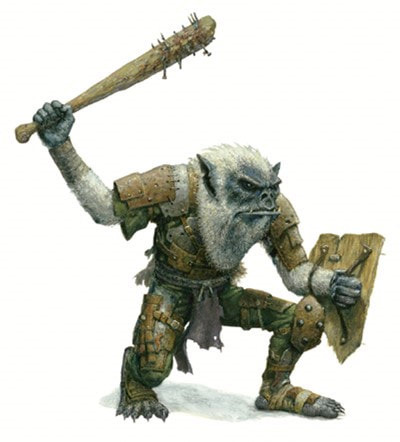







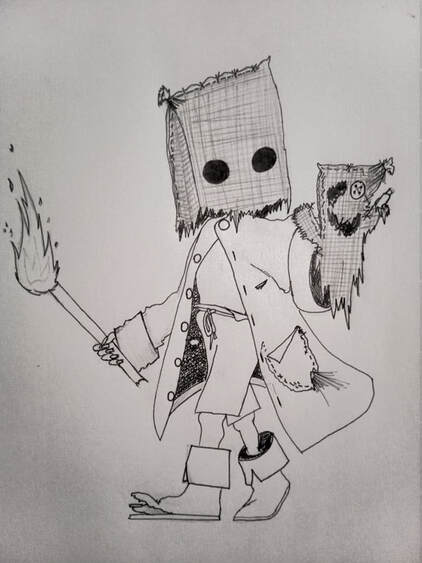









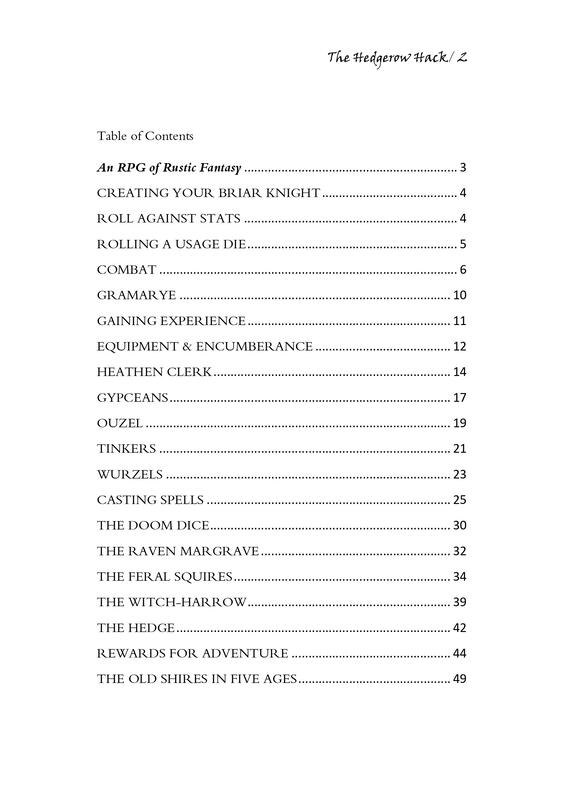





 RSS Feed
RSS Feed








